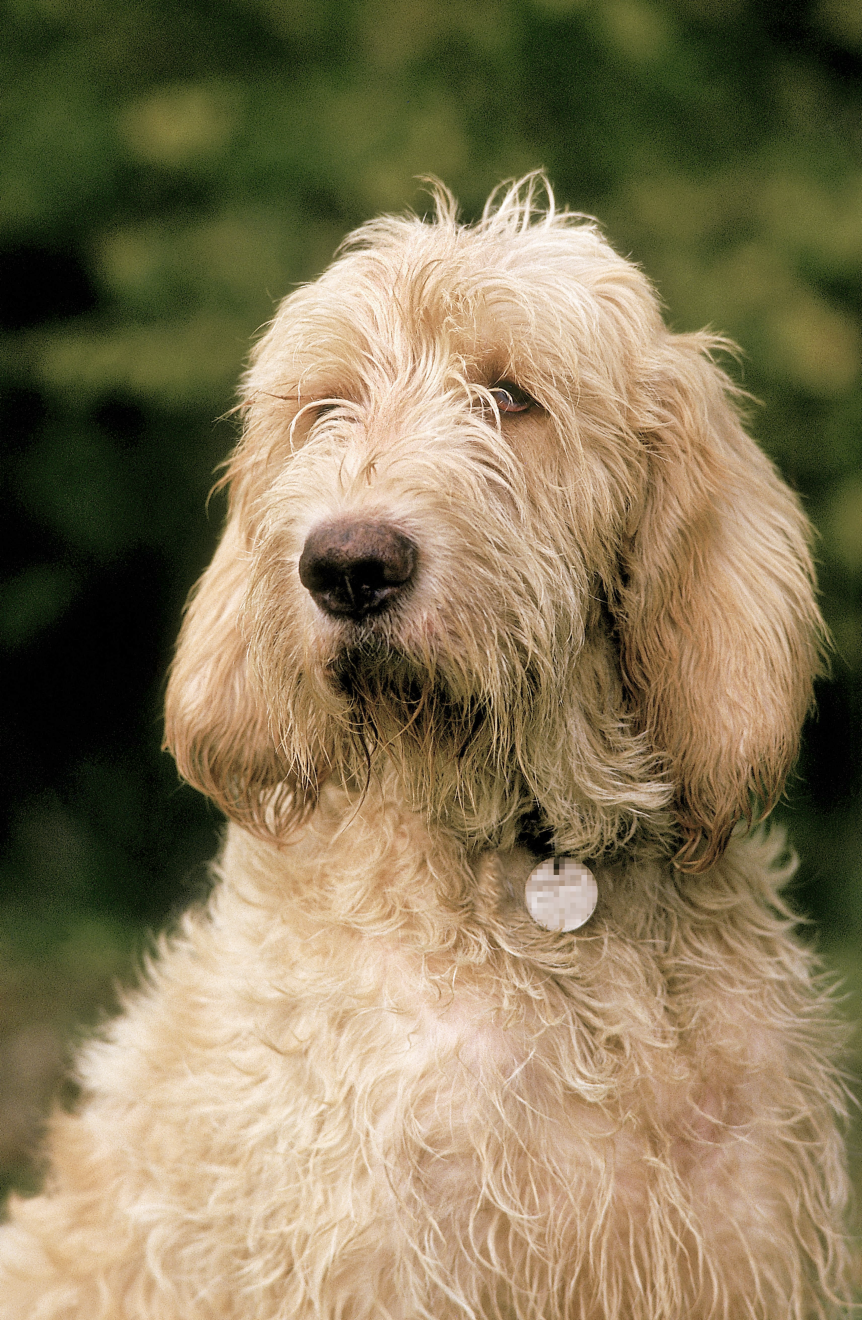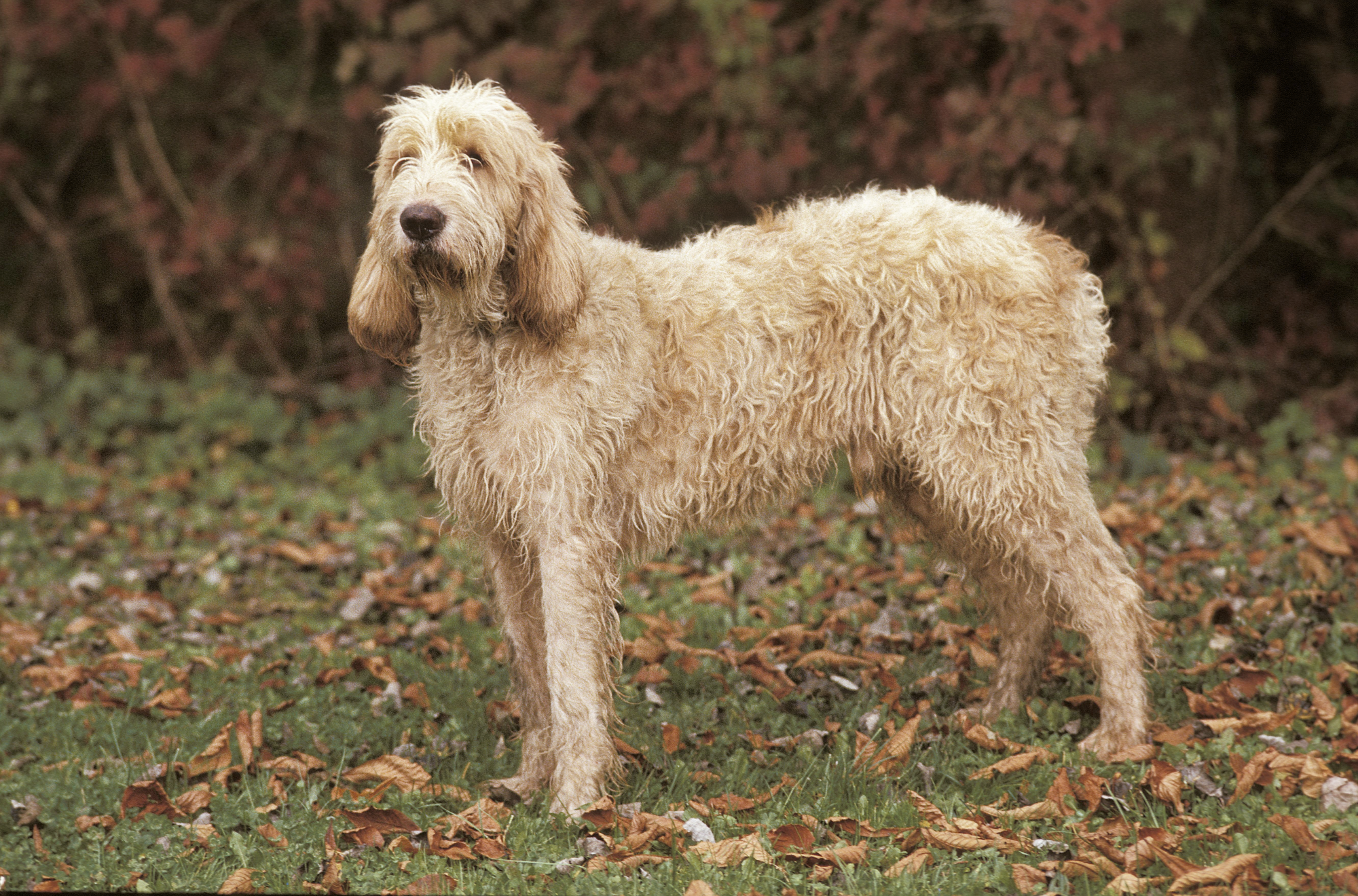
Let's talk Grand Griffon Vendéen dogs
The Grand Griffon Vendéen’s placid expression belies this breed’s energy: These amiable coarse-haired dogs can be speedy when they want to be, and need regular and plentiful exercise to stay healthy and content. While Grand Griffon Vendéen dogs were originally bred as hunting dogs, they also have a lovely docile and affectionate temperament, making them a great choice as a companion to humans. Just as long as you have enough space for them to stretch out those long limbs.
Official name: Grand Griffon Vendéen
Origins: France

| Drooling tendencies: |
|
Warm weather? |  |
| Shedding level: | Suited to apartment living? | ||
| Physical activity needs (high, low, medium): | Medium | Kid-friendly? |
 |
| Compatibility with other pets: | Can stay alone? * |
* We advise against leaving pets alone for long stretches. Companionship can prevent emotional distress and destructive behaviour. Speak to your veterinarian for recommendations.
Every pet is different, even within a breed; this snapshot of this breed’s specifics should be taken as an indication.
For a happy, healthy and well-behaved pet, we recommend educating and socialising your pet as well as covering their basic welfare, social and behavioural needs.
Pets should never be left unsupervised with a child.
All domestic pets are sociable and prefer company. However, they can be taught to cope with solitude from an early age. Seek the advice of your veterinarian or trainer to help you do this.


| Baby age: | Birth to 2 months |
| Puppy age: | 2 to 15 months |
| Adult age: | 15 months to 5 years |
| Mature age: | 5 to 8 years |
| Senior age: | From 8 years |

1/7
Get to know the Grand Griffon Vendéen
All you need to know about the breed
Docile but enthusiastic, the Grand Griffon Vendéen has coarse wiry hair, usually in white with tan, orange or black markings, and a strong, muscular build: They look as if they were bred for the great outdoors, and that’s no coincidence.
The breed originally comes from a part of France known for its rugged, unspoiled landscapes and even modern-day Grand Griffon Vendéen dogs need their space. While they make excellent companions for humans, and are generally calm at home, the breed is really not suitable for city living. The Grand Griffon Vendéen needs plenty of exercise, long walks as well as chances to run and burn off some of their energy.
Once trained, Grand Griffon Vendéen dogs get on well with children, though of course like any other breed they should not be left unattended with them. They are not suitable additions to households containing small pets such as hamsters or guinea pigs—four hundred years of hunting instinct don’t get forgotten overnight. As dogs accustomed to living in a pack, however, they should be fine with other dogs.
Grand Griffon Vendéen dogs have independent temperaments, so will need a patient and consistent approach to training, with plenty of treats (taken out of their daily food rations of course!).

2/7
2 facts about Grand Griffon Vendéen dogs
1. Extended family
One Grand Griffon Vendéen already seems like quite a lot of dog … so just imagine a family reunion of all the long-lost cousins (aka the different griffon dog breeds)! Four Griffon varieties hail from the same part of France, the Vendée, and share some ancestry in common, while there are more griffon cousins scattered across other regions of France and elsewhere in Europe.
2. Griffon definition
The word griffon originally comes from Greek, via Latin, and refers to a collection of medium or large-size hounds or pointing dogs with coarse or wiry coats. The imposing and shaggy Grand Griffon Vendéen breed certainly fulfills these criteria. Griffon dog breeds have a long pedigree: The Ancient Greek writer Xenophon, who was born in the year 430 BC, referred to griffon dogs.
History of the breed
Hailing from the rugged and windswept landscape of the Vendée department in western France, the Grand Griffon Vendéen was originally bred to hunt large game. These independent-minded canines are part of an extensive dog dynasty that dates back some four centuries: Three smaller breeds – the Briquet Griffon Vendéen, the Petit Basset Griffon Vendéen and the Grand Basset Griffon Vendéen – also come from the same area. The Grand Griffon Vendéen’s predecessors were smooth-haired hounds called simply Grand Vendéens, themselves descended from dogs known in the 16th century as Greffiers or “the King’s white hounds”.
Other Griffon breeds present elsewhere in France also contributed to the make-up of the Grand Griffon Vendéen breed. Centuries later, after World War II, the Grand Griffon Vendéen began to decline in numbers. Thankfully a group of enthusiasts set about saving the breed from extinction and it was recognised by the United Kennel Club in 1996.

4/7
From head to tail
Physical characteristics of Grand Griffon Vendéen dogs
1. Ears
Fine, long, oval-shaped ears, covered in long hair.
2. Coat
Long coat with a dense undercoat, variety of colours.
3. Body
Solid, strong body, thick tail gradually tapering.

5/7
Things to look out for
From specific breed traits to a general health overview, here are some interesting facts about your Grand Griffon Vendéen

6/7
Caring for your Grand Griffon Vendéen
Grooming, training and exercise tips
Grand Griffon Vendéen dogs’ magnificent wiry top coat, which is complemented by a dense undercoat, protects these outdoorsy dogs from thick undergrowth and brambles. It requires weekly brushing and the occasional bath to look its best. Check your dog’s ears regularly for wax and debris build-up, which can cause ear infections. Like other breeds, their nails need trimming regularly and their teeth should be cleaned frequently (daily if possible) too.
Grand Griffon Vendéen dogs need plenty of exercise, and should only be allowed to run off the lead in a securely enclosed space, because of the breed’s strong and enduring prey drive.
When it comes to training, patience and a kind but firm approach will be needed—these dogs can be independent-minded. Early socialisation will help them overcome their natural wariness of strangers and fit in perfectly with their human families.
7/7
All about Grand Griffon Vendéen dogs
No. No dog is truly hypoallergenic, and it is a dog’s dander (skin flakes) not their fur, that triggers allergies in humans. The Grand Griffon Vendéen breed should be brushed regularly to stay in top condition. Brushing will also help remove skin flakes.
These dogs are docile and affectionate with their humans, and once trained get on well with children (although they shouldn’t be left alone with them)—however this breed is known as an independent-minded one, not really suitable for inexperienced owners.
translations.feature.breeds.otherbreeds
Read more on this topic

How your dog's nutrition needs change with age

How to adopt a dog

Things to consider before getting a dog
Sources
1 - Veterinary Centers of America https://vcahospitals.com/
2 - Royal Canin Dog Encyclopaedia. Ed 2010 and 2020
3 - Banfield Pet Hospital https://www.banfield.com/
4 - Royal Canin BHN Product Book
5 - American Kennel Club https://www.akc.org/


